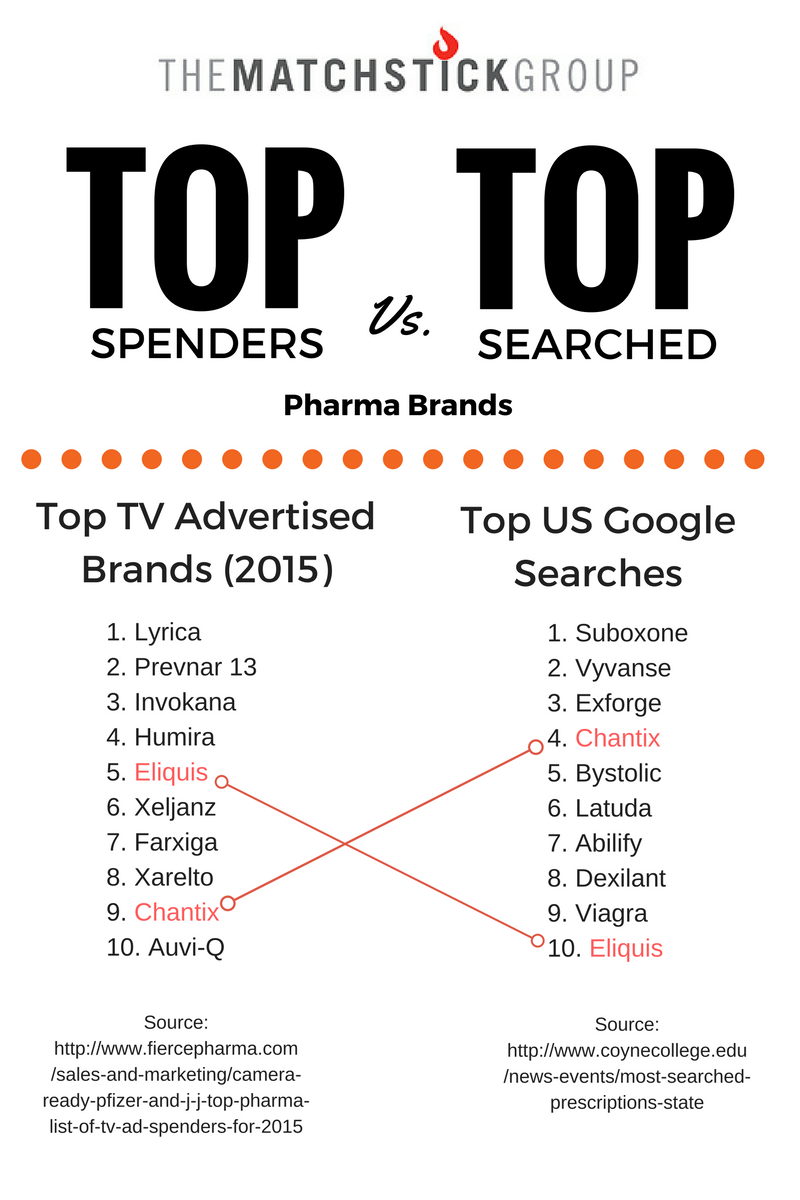By now, most everyone has seen Coyne College’s map of the most searched-for pharma brands in the US — it has shown up everywhere from Fierce Pharma to r/dataisbeautiful. But, here at The Matchstick Group, we were curious: does this map reflect these brands’ advertising spending? The answer, surprisingly, is no. When comparing the top brands on the map to the top ad spenders in the pharmaceutical space, it’s clear that airwave saturation doesn’t seem to impact state-by-state Google searches. So, if the map shows no apparent correllation between ad spend and search traffic, what does it show?
The top searched pharmaceutical drug in the US is Suboxone, a drug used to treat narcotic addiction. The opiate addiction epidemic has been gaining more and more attention in the news, so this might lead you to wonder: did people start doing more Google searches about Suboxone because of increased news coverage of the opiate addiction epidemic, or did the opiate addiction epidemic itself cause the enormous search volume? Framed another way, is the news coverage a form of “free advertising” for Suboxone, and is that contributing to the search volume? From looking at the trend indicated by our comparison, the answer would favor the opiate addiction epidemic itelf — rather than the news coverage or any other advertising — being the cause of the high search volume.
So what does this mean? How can pharma marketers take advantage of the trend indicated by the map? The simplest answer is to think of search as a place where consumers want to start the conversation. They’re typing questions into Google in order to find answers. As marketers, we have to ask ourselves, are we providing the right answers for them? Are we thinking of them as taking steps on a journey to find a solution to their problem? This is called the buyer’s journey.
Interested in learning more about the buyer’s journey? Click here.
It’s evident that television ads, while they may impact other performance indicators, don’t really translate to an increase in the organic search volumne. TV can be good for other metrics, such as brand awareness scores, physician awareness, patient awareness, refill/compliance rates, etc. However, “awareness” is only helpful if it is part of the solution to the customer’s problem.
If you’re not sure what performance indicators companies should be looking at, check out our “Marketing Metrics That Matter” cheat sheet.
It would be nice to be able to dig deeper into Coyne’s data to find out more, like who are the people who did these searches? Consumers/patients or healthcare professionals? How many were repeat searches? How did these brands rank in prescriptions in these states? What were the top sites served up by Google for these searches and did they vary by state? How does this list compare to the top medical problems that were searched for? There’s clearly more for the industry to analyze here, and opportunities to make the most of their advertising dollars. Stay tuned to this blog for continuing analysis.






